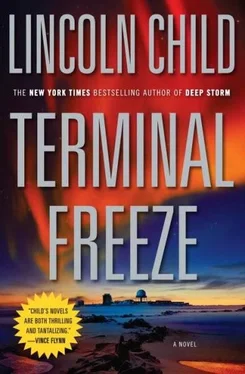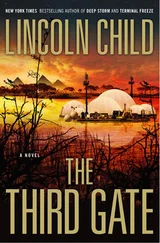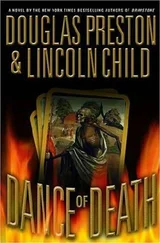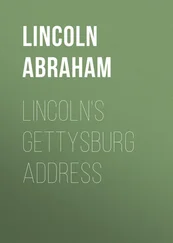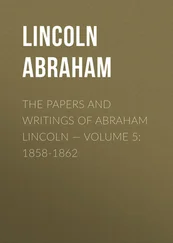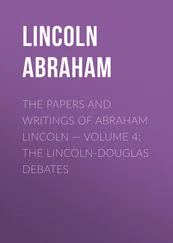“What’s that?” he asked Creel.
“Lateral drill,” the foreman growled over the noise. “Tipped with diamond-silicone carbide.”
Slowly, the device was lowered into one of the wider ice channels. The whine increased in urgency as, nine feet below, the drill bit into the ancient ice. The snorkel was lowered into the trench and meltwater once again began gushing down the cave floor. Yet another mechanical arm hovered nearby, ready to slip supports into position beneath the ice block.
The lateral cut took less time, and within ten minutes the drill was retracted. At a nod from Creel, the roustabouts swung two grappling hooks forward, lowered them into the trench, and fixed them to the ends of the ice block. These were further secured with lashings of thick canvas straps.
Conti looked again at Fortnum and Toussaint. “I want a clean take. We’ll only get one chance at this.”
Fortnum adjusted his lens, checked his radio pack, nodded.
Everything ground to a halt while Conti insisted on getting down on his hands and knees to examine the block, nose inches from the ice. Fortnum filmed the director’s every move. “Let’s go,” Conti said at last, rising, the lens around his neck swinging portentously.
Creel signaled his team. With a fresh roar of machinery, a winch atop the flatbed was engaged. There was a series of clanks as heavy chains fixed to the grappling hooks pulled taut. For a moment, everyone watched as the engine whined and the hooks strained against the reluctant ice. Then-with a low grating that seemed to shake the mountain itself-the huge block began to rise.
“Easy,” said Creel.
Conti looked at Fortnum. “Train your camera on the equipment. Your shot should be like a caress. This is what’s lifting our treasure from its frozen prison.”
Slowly, very slowly, the frozen cat rose from the bed it had lain in for thousands of years. The scientists pressed forward, making visual observations and taking hurried notes. Marshall drew in with the rest, staring intently. The block of ice was maddeningly opaque, a storm of mud and debris frozen in time, the color of dense smoke under the pitiless glare of the searchlights. The surface was ribbed in tiny, regular channels where the laser had cut it free. Christ, Marshall thought, caught up in the moment despite himself. That block’s got to weigh four tons, minimum.
It rose, higher and higher, until the head of the crane bumped against the ceiling of the cave. Then at last the block swung free, tilting sharply and scraping along the snowy floor, narrowly missing Faraday, who’d been busy examining it with a sonar spectrometer. People scattered, tripping over one another to get out of the way.
“Stabilize!” Creel shouted.
The winch squealed in protest as the operator boosted power to the maximum. The block tilted, yawing wildly, then slowly settled back onto the floor of the cave. The crane operator throttled down for a moment. Then-slowly and carefully-he raised the block again, swung it around, and maneuvered it onto the flatbed. There was a sharp hiss of hydraulics. As the cameras rolled, a few of the other roustabouts secured the block to the vehicle and threw a heavy insulating tarp over it. Within minutes it was all over, the machinery was rolling back up the tunnel, and the countless spacers were being removed from their positions and returned to their canvas bags. And the cat-along with its surrounding block of ice-was on its way to the climate-controlled vault, where it would be kept securely locked until it was thawed and displayed to a live audience of millions.
Conti surveyed the tunnel, a look of evident satisfaction on his face. “We’ll use the departing machinery as a keyframe,” he told Fortnum. “We’ll do a series of cutaways exiting up the tunnel, then a jump cut back to the base. Shoot a lot of coverage. And that’ll be a wrap.”
He turned to Marshall. “So. Ready for that interview?”
As they stepped back into the overpowering warmth of the base’s entrance plaza, Conti nodded for the soundman and Toussaint to accompany them. Then he turned to Marshall. “We might as well shoot this from your lab.”
“It’s this way.” Marshall led the small group down the central staircase, along the wide corridor, then right at an intersection, stopping at a half-open door. “Here we are.”
Conti leaned in, took a quick look around. “This is your lab?”
“Yes. Why?”
“It’s too neat. Where’s all the equipment? The samples? The test tubes?”
“My samples are kept in a refrigerated locker down the hall. We’ve set up separate rooms for the scientific equipment, though we left most of the heavy stuff back in Woburn. This expedition is primarily about observation and sample collection-the analysis will come later.”
“And the test tubes?”
Marshall smiled thinly. “Paleoecologists don’t have much use for test tubes.”
Conti thought for a moment. “I noticed that we passed a more appropriate lab a few doors back.”
“Appropriate?” Marshall echoed. But Conti was already walking back down the hall, the soundman and photographer in tow. After a moment, Marshall shrugged and followed.
“Here.” Conti had stopped outside a room whose every horizontal surface was covered with journals, printouts, plastic sample containers, and instrumentation.
“But this is Wright’s lab,” Marshall protested. “We can’t use it.”
Conti had raised the lens dangling around his neck to one eye and was examining Marshall through it. “Why not?”
Marshall hesitated. He realized that, in fact, there was no good reason why they couldn’t use Faraday’s lab. “Why don’t you interview him, then?”
“Because, Dr. Marshall-how can I put this delicately?-the camera would not be kind to Dr. Faraday. You, however, have a rugged academic appeal. Now, may we proceed?”
Marshall shrugged again. He found it difficult talking to a man who was regarding him through a fist-sized lens.
Conti stepped inside and-lens still in place-motioned Toussaint where he wanted the camera placed. The photographer walked to the back of the lab, followed by the soundman. “Dr. Marshall,” Conti went on, “we’re going to film you walking in and having a seat behind the desk. Ready?”
“I suppose so.”
Conti dropped the lens. “Action.”
As the camera rolled, Marshall walked into the lab, stopping when he saw the tottering pile of papers placed on Faraday’s lab chair.
“Cut.” Conti swept the papers onto the floor, shooed Marshall back out into the hall. “Let’s try that again.”
Once again, Marshall walked through the door and into the office.
“Cut!” Conti barked. He frowned at Marshall. “Don’t just come strolling in. Let’s see some excitement in your step. You’ve just made a big discovery.”
“What discovery would that be?”
“The saber-toothed tiger, of course. Let the audience see your enthusiasm. Let them live the thrill of this marvel through you. ”
“I don’t understand. I thought this whole circus was about thawing the carcass, live.”
Conti rolled his eyes. “You can’t take up seventy-four and a half minutes of prime time with that. Please get with the program, Dr. Marshall. We need to show the whole backstory, the buildup. Get the audience to buy in 100 percent. We won’t actually open the vault until the final segment.”
Marshall nodded slowly. He tried hard to do what Conti asked: get with the program. He swallowed his irritation at the artificiality of it all; he tried to forget his indignation at the sacrifice of science on the altar of theatricality. He reminded himself Conti was an award-winning producer; that his From Fatal Seas was a landmark among modern documentaries; that having an audience of millions could only be beneficial to future research.
Читать дальше
